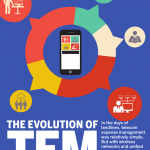Many organizations today still believe that the best customer service is achieved through live answering of calls. This includes main numbers, call centres and other answer positions within the company. It is interesting to note that in the majority of these companies, customers are not satisfied with the service provided (such as wait times and multiple transfers) and staff are frustrated dealing with repeat calls.
I understand why many companies shy away from using technology. In the 80’s and 90’s many organizations implemented extremely poor menu systems with the intent to block callers from reaching people. Instead, callers ended up in ‘voicemail jail’. These systems were originally intended to provide service for every specific question or need that may arise. The caller would navigate a menu to find the resource they need without requiring intervention of a traditional switchboard or reception position. The resulting menu nightmares produced the exact opposite result.
The judicious use of self-service technologies can actually contribute to happier customers. The question should be what is good customer service? My definition is “providing customers their desired end result with minimum effort on the customer’s part”. The desired end result could be getting the information they need or someone solving their issues. The customer should not have to navigate large menus, make repeat calls, be transferred multiple times and have to provide their information and explain their situation over and over.
So how can technology be used to assist with good customer service? First, we need to recognize that menus and IVR (Interactive Voice Response) systems should never include every conceivable option for customers. Instead, we need to remember the 80/20 rule. Eighty percent of your callers will access 20% of your services. Therefore, we need to create self-service and menu applications that address the 20% of services used by customers the most. The remaining services should be handled by your staff. In addition, menus should only have 3-4 options and not be more than 3 levels deep.
By implementing a well-designed menu or self-service application, callers will be able to get the information they need with a minimum of fuss. The result is a happy, satisfied customer. If they are getting the information they need using the automated system, or are being directed to the correct department, bottlenecks that occur at primary answering positions such as reception or the general queue in the call centre are reduced increasing satisfaction with both your customers and your staff.




